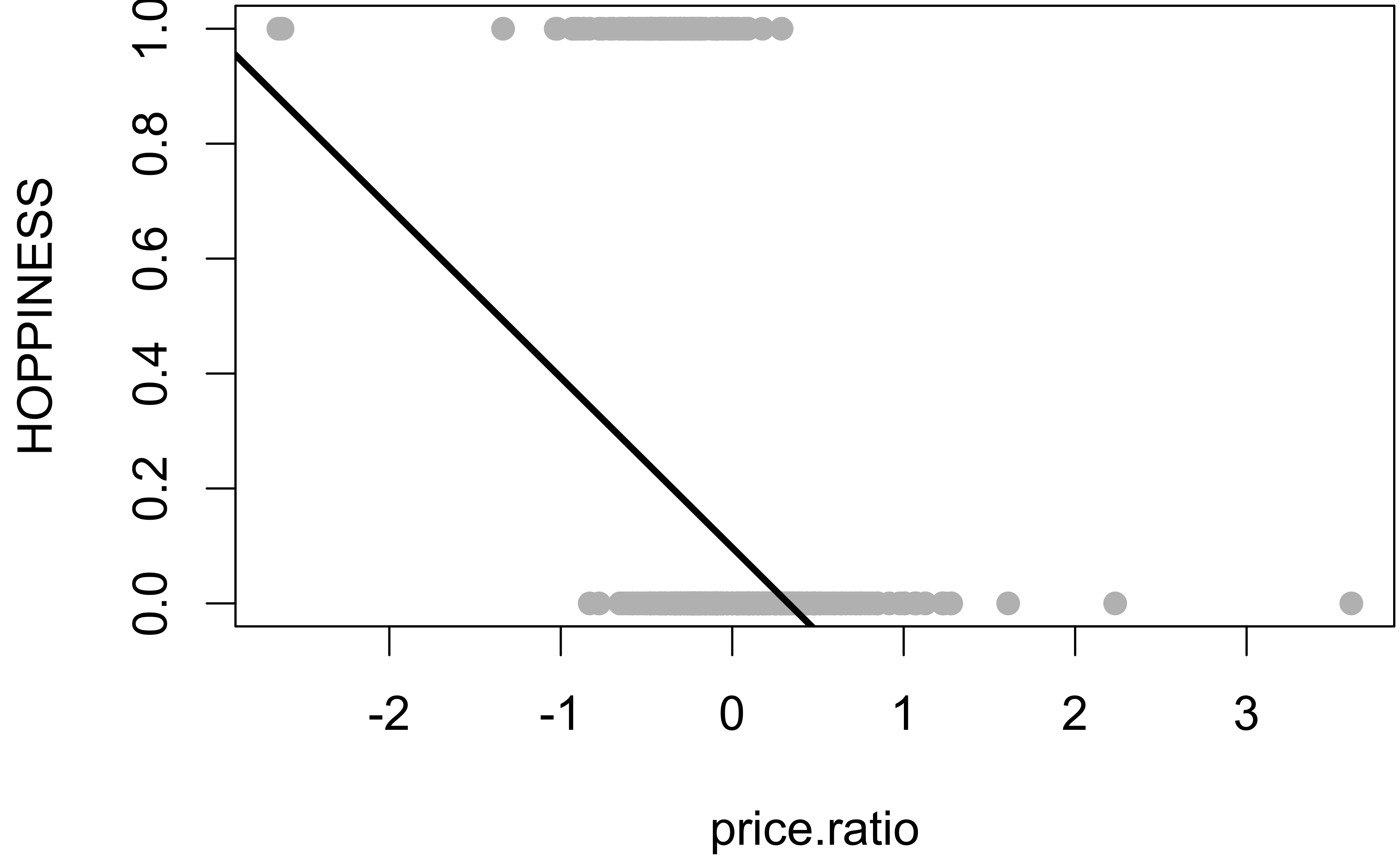Models for individual demand
Building Response Models in R

Kathrin Gruber
Assistant Professor of Econometrics Erasmus University Rotterdam
Customer purchases
str(choice.data)
'data.frame': 2798 obs. of 15 variables:
$ OBS : int 1 2 3 4 5 6 7 8 9 10 ...
$ HOUSEHOLDID : int 1 1 1 1 1 1 1 1 1 1 ...
$ LASTPURCHASE : int 0 0 0 0 0 0 0 0 0 0 ...
$ BUD : int 1 1 1 1 1 1 1 1 1 1 ...
$ HOPPINESS : int 0 0 0 0 0 0 0 0 0 0 ...
$ PRICE.BUD : num 0.052 0.052 0.046 0.052 0.046 ...
...
OBS-ervation week.HOUSEHOLDIDof the purchase records.LASTPURCHASErecorded of the household.
To purchase or not to purchase?

- Linear probability model $$\textsf{Pr}(\textsf{Purchase}=1) = f(\textsf{Advertising, Promotion})$$
Competition
price.ratio <- log(choice.data$PRICE.HOP/choice.data$PRICE.BUD)
head(cbind(price.ratio, choice.data$PRICE.BUD, choice.data$PRICE.HOP))
price.ratio
[1,] -0.42488315 0.052 0.034
[2,] -0.16705410 0.052 0.044
[3,] 0.04255961 0.046 0.048
[4,] -0.42488315 0.052 0.034
[5,] 0.04255961 0.046 0.048
[6,] -0.44895021 0.047 0.030
A linear probability model for beer demand
probability.model <- lm(HOPPINESS ~ price.ratio, data = choice.data)
plot(HOPPINESS ~ price.ratio, data = choice.data)
abline(probability.model)

Let's practice!
Building Response Models in R

